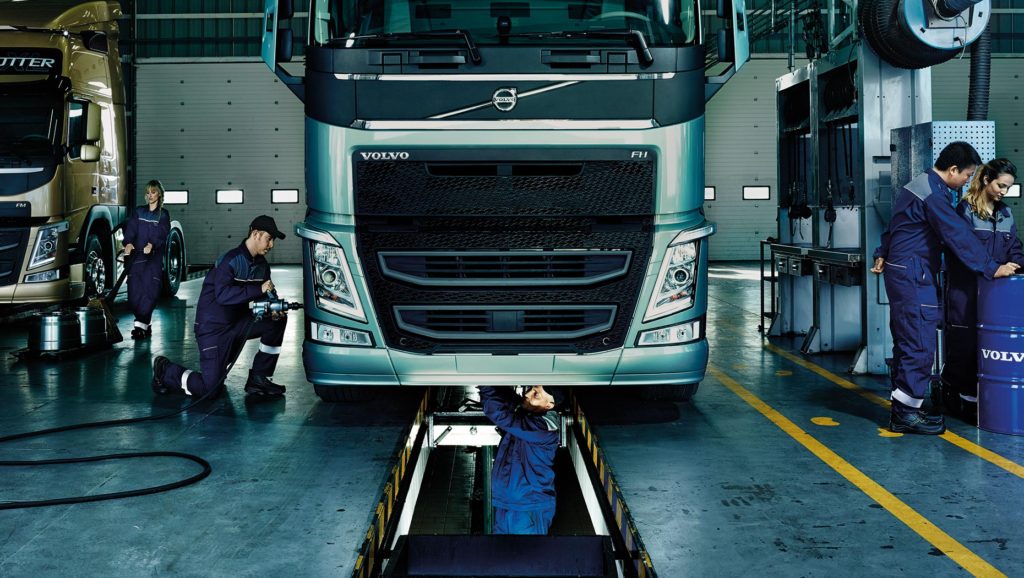When managing a trucking business, the control of maintenance costs and repairs is an important part of the profitability and operational effectiveness. The lease structure of the trucks is one of the factors that can greatly impact these costs. The existing article will discuss the impacts of various truck lease arrangements on maintenance and repair costs and will provide advice to trucking companies to make appropriate decisions.
Full-Service Lease
Full-service lease is the whole lease that includes the truck and maintenance and repair services. Maintenance and repair of the vehicles are provided by the leasing company in a full-service lease. According to WorkTruck.com a full-service lease has a lot of benefits for a trucking business, such as the ability to see the monthly expenses, and not have an internal crew to maintain the trucks. Lease payment normally includes maintenance and repair costs, thus the budgeting is simplified and avoids surprises.

Maintenance-Inclusive Lease
Another solution is a maintenance integrated lease where the lessor performs daily maintenance tasks and most repairs, but not all. The lease agreement will specify the maintenance services that are included, including the oil changes, filter replacements, and tire rotations. However, the lessee can suffer large expenses or those caused by accidents or negligence. This type of lease structure offers a compromise between the full-service lease and the lessee’s maintenance and repair costs.
Net Lease
Net lease, also known as finance and dry leases, typically requires the lessee to pay for all the maintenance and repairs. The lessee has full ownership of the truck under this lease arrangement and can maintain it. Even though monthly lease payments are lower than regular or maintenance-inclusive leases, the lessee has to finance maintenance and repair costs separately. This lease structure presumes that the trucking business has the ability and expertise to execute repairs and maintenance well.
Owner-Operator Lease
When owner-operators are a part of the process, the former won and operate their trucks, however, they are contracted with a carrier or a firm to provide freight services. The truck owner-operator is responsible for all costs that come with truck ownership, including maintenance and repair. These individuals determine the maintenance plan, select the service providers, and manage the expenses. This type of release gives the most freedom; however, all maintenance and repair costs have to be budgeted and timetabled to the minute.
Impact on Maintenance and Repair Costs
Penske claims that the lease structure selected will have a profound impact on the maintenance and repair costs of the trucking operations. Here are some essential tips if you’re learning how to lease a commercial truck:
Predictable Expenses: A majority of developed-inclusive leases are full-service, which is aimed at providing consistent monthly costs and helps trucking companies budget more precisely. It is particularly useful for small businesses with fewer funds or for those who do not wish to incur unplanned repair costs.
Reduced Administrative Burden: Lease packages that include maintenance and repair services take away the maintenance headache and hassle of coordinating repairs. This helps in saving time and effort, which can be used for core business activities.
Access to Expertise: Full-service and maintenance-inclusive leases typically present a group of well-qualified service providers. This ensures that both repairs and maintenance are performed by highly trained specialists, who are familiar with the specific needs of the truck. So, the likelihood of expensive mistakes and inadequate maintenance is lower.
Financial Responsibility: In the case of apex leases and owner-operator agreements, the lessee bears all costs of maintenance and repair.
In conclusion, leasing the truck’s arrangement has a big effect on the cost of maintenance and repair for the trucking business. It is important to critically evaluate the advantages and disadvantages of every lease option and consider such factors as financial capacity, skill, administrative overhead, and desired flexibility. A well-informed decision is very crucial for trucking enterprises in maintaining a check on maintenance and repair costs so that the fleet keeps running smoothly and the business remains profitable.


